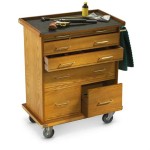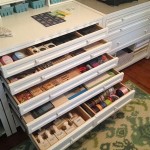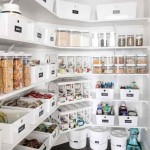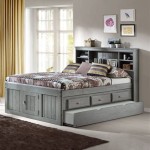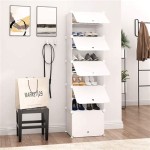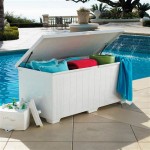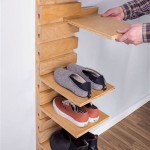Bedroom Stuffed Animal Storage Ideas: Optimizing Space and Aesthetics
Stuffed animals, often cherished companions from childhood, can quickly accumulate and present a significant storage challenge in bedrooms. Their soft, bulky nature makes them difficult to organize, leading to cluttered floors, beds, and shelves. Effective stuffed animal storage is essential for maintaining a tidy and functional bedroom, while also preserving these sentimental items. This article explores various storage solutions, considering both practicality and aesthetic appeal, to help create a more organized and visually appealing bedroom environment.
Understanding the Need for Stuffed Animal Storage Solutions
The need for designated stuffed animal storage stems from both practical and psychological considerations. From a practical standpoint, unorganized stuffed animals pose tripping hazards and can contribute to dust and allergens within the bedroom. A cluttered environment can also be visually distracting and hinder the ability to focus or relax. Furthermore, improper storage can lead to damage to the stuffed animals themselves, including tears, stains, and loss of shape.
Psychologically, organized storage contributes to a sense of calm and control within the living space. A tidy room promotes relaxation and can improve focus, especially in a bedroom setting where rest and unwinding are paramount. Children, in particular, benefit from organized surroundings, as it helps them develop a sense of responsibility and encourages them to maintain order in their own environment. Therefore, implementing effective storage solutions addresses both the physical clutter and its potential impact on mental well-being.
The appropriate storage method often depends on the number of stuffed animals, the available space, and the overall aesthetic of the room. Solutions can range from simple and inexpensive DIY options to more elaborate, purpose-built storage furniture. The key is to select a method that is both functional and visually appealing, integrating seamlessly into the bedroom's existing décor.
Creative Storage Solutions for Stuffed Animals
A multitude of creative storage solutions exist, catering to different room sizes, budgets, and aesthetic preferences. These solutions can be broadly categorized into those that utilize vertical space, those that maximize floor space, and those that offer dual functionality. Each category offers a range of options, allowing for customization to suit individual needs.
Vertical Storage Options: These methods are particularly effective in smaller bedrooms or when floor space is limited. Utilizing vertical space effectively can create the illusion of more room and prevent the accumulation of clutter on the floor.
Hanging organizers, such as over-the-door organizers or hanging net baskets, are a cost-effective and space-saving solution. Over-the-door organizers can be easily installed on the back of a door, providing multiple pockets for storing stuffed animals. Hanging net baskets can be suspended from the ceiling or walls, creating a visually appealing display while keeping the stuffed animals off the floor. These options are particularly well-suited for lighter stuffed animals.
Shelving units, both traditional and floating, provide another vertical storage solution. Shelving can be used to display stuffed animals in an organized and aesthetically pleasing manner. Floating shelves, in particular, offer a modern and minimalist look, while also maximizing floor space. The height and configuration of the shelves can be adjusted to accommodate different sizes and quantities of stuffed animals. Cubby shelves are also effective, creating individual compartments for each stuffed animal or grouping.
Wall pockets, made from fabric or mesh, can be hung on the walls to create individual storage compartments. These pockets are a decorative and functional solution, adding texture and visual interest to the walls while keeping the stuffed animals organized. They are especially useful for smaller stuffed animals or for creating a thematic display.
Floor Space Maximizing Options: These methods focus on utilizing existing floor space efficiently or incorporating storage into furniture already present in the room.
Storage ottomans are a versatile option, providing both seating and storage space. The ottoman can be used to store stuffed animals and other items, while also serving as a footrest or extra seating. This option is particularly useful in bedrooms where space is limited and furniture needs to serve multiple purposes.
Storage benches, similar to ottomans, offer seating and storage. They can be placed at the foot of the bed or along a wall, providing a convenient and accessible storage solution. Benches with hinged lids make it easy to access the stored items, while also keeping them out of sight.
Under-bed storage containers are designed to fit under the bed, utilizing often-unused space. These containers can be used to store stuffed animals, out-of-season clothing, or other items. They are particularly useful in bedrooms where closet space is limited. Clear plastic containers allow for easy identification of the contents, while fabric containers provide a more aesthetically pleasing option.
Bean bag chairs designed for stuffed animal storage provide a creative and interactive storage solution. The bean bag cover can be filled with stuffed animals, creating a comfortable and supportive seat. This option is particularly popular with children, as it allows them to actively participate in the storage process and creates a functional and playful piece of furniture. It also repurposes the stuffed animals, giving them a new life as filling for a comfortable seat.
Dual Functionality Storage: These solutions blend storage with another purpose, maximizing space and efficiency.
Toy chests, a classic storage solution, offer a versatile and durable option. Toy chests can be used to store a variety of items, including stuffed animals, blocks, and other toys. They are available in a range of sizes and styles, allowing for customization to suit individual needs and aesthetic preferences. Look for chests with safety hinges to prevent accidental slamming and injury.
Bookcases, while primarily intended for books, can also be used to store stuffed animals. The shelves can be used to display a combination of books and stuffed animals, creating a visually appealing and organized display. Bookcases are particularly useful in bedrooms that serve as both sleeping and play areas.
Hanging shoe organizers can be repurposed as stuffed animal storage, especially for smaller plush toys. Hung on the back of doors or inside closets, these organizers create readily accessible pockets that keep toys visible and off the floor. This option is especially useful for organizing a large collection of small, similar items.
Implementing and Maintaining Stuffed Animal Storage
Selecting the appropriate storage solution is only the first step. Implementing and maintaining the system is crucial for long-term success. This involves organizing the stuffed animals, establishing clear storage guidelines, and regularly decluttering.
Before implementing any storage solution, it is essential to declutter the stuffed animal collection. This involves sorting through the stuffed animals and deciding which ones to keep, donate, or discard. Consider factors such as sentimental value, condition, and frequency of use. The goal is to reduce the overall quantity of stuffed animals to a manageable level, making the storage process more efficient.
Once the collection is decluttered, the remaining stuffed animals can be organized according to size, color, or type. This makes it easier to find specific stuffed animals and creates a more visually appealing display. Larger stuffed animals can be stored in larger compartments, while smaller stuffed animals can be grouped together in smaller containers or pockets.
Establishing clear storage guidelines is essential for maintaining order. This involves designating specific storage locations for each stuffed animal and communicating these guidelines to the child or children who use the room. Encourage them to put the stuffed animals back in their designated locations after playing with them. Consistency is key to maintaining a tidy and organized bedroom.
Regular decluttering is also important. Stuffed animal collections can quickly grow over time, so it is important to periodically sort through the collection and remove any items that are no longer needed or wanted. This can be done on a seasonal basis or whenever the storage space becomes overcrowded.
In addition to decluttering, stuffed animals should also be cleaned regularly to prevent the accumulation of dust and allergens. Many stuffed animals can be machine-washed on a gentle cycle, while others may require spot cleaning or dry cleaning. Refer to the manufacturer's instructions for specific cleaning recommendations.
By implementing these strategies, individuals can effectively manage stuffed animal storage and maintain a tidy and organized bedroom environment.

35 Brilliant Stuffed Animal Storage Ideas To Tame Toy Chaos

15 Clever Stuffed Animal Storage Ideas

Diy Kid Friendly Wall Mounted Stuffed Animal Storage

19 Stuffed Animal Storage Ideas Best For Toy

35 Brilliant Stuffed Animal Storage Ideas To Tame Toy Chaos Happy Organized Life

Stuffed Animal Storage Ideas Create Your Own Little Zoo Girl Bedroom Designs Room Design

19 Stuffed Animal Storage Solutions To Save Space And Time Bored Panda

10 Diy Stuffed Animal Storage Ideas

Genius Stuffed Animal Storage Ideas For Kids

10 Diy Stuffed Animal Storage Ideas
Related Posts

